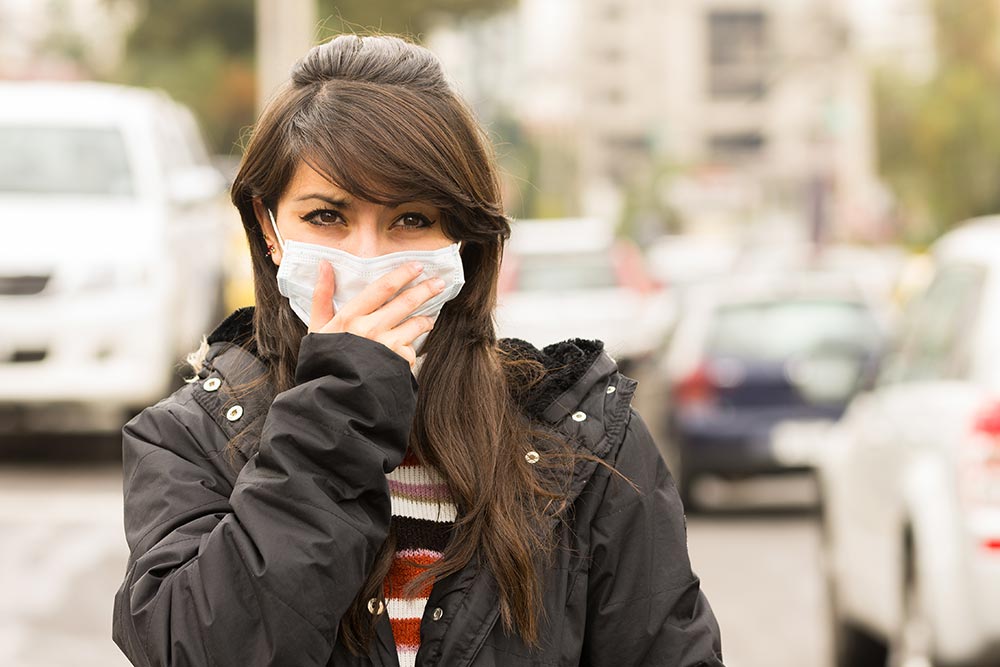Air Quality: The evolution of our concerns and coping strategies
Last week, dystopian Mars-like, yellow-tinged skies engulfed a number of cities across North America as wildfire smoke billowed from Canada. This was a stark reminder of how precious our air is.
Despite the US government’s efforts to improve air quality, the concentration of fine particulate matter (PM2.5 – <2.5 micrometres in diameter), one of the predominant air pollutants present in smoke, peaked at 303.3μg/m3. This is over 60 times the annual average limit of 5μg/m3 recommended by WHO. Researchers from Stanford University predicted that the hazardous pollution would result in a surge in hospitalisations due to cardiovascular and respiratory problems, along with a rise in premature births and mortalities. Consequences could be even more severe for vulnerable groups, including children, pregnant women and those with prior medical conditions.
This anecdote serves to remind us of the hazardous effects of a polluted atmosphere. On Clean Air Day, the largest air pollution campaign in the UK, Graduate Environmental Engineer Yi Zhang, discusses the current challenges facing our air quality.
Here in the UK, long-term exposure to ambient air pollution has been estimated to be equivalent to 28,000 to 36,000 premature deaths every year. Globally, poor air quality is recognised by the World Health Organisation as the greatest environmental health risk.
As research on the effects of air pollution continues to advance, it is becoming increasingly evident that the health impacts extend throughout the entire body. In addition to its better-known harmful effects on the respiratory and cardiovascular systems, air pollution has the potential to adversely affect the functioning of various organs throughout an individual’s lifetime. Further, mounting evidence suggests a possible link between air pollution and brain health, including dementia and cognitive decline.
Meanwhile, the origins of air quality issues have varied in response to the rapidly evolving world, which has placed new challenges on air quality professionals.
Natural environment and climate change
The hazy silhouette of New York’s iconic landmarks against the orange-hued sky highlights the interconnection of air quality and climate change. As climate change increases the frequency, duration and severity of natural disasters such as wildfires, these interconnections will become more noticeable.

Frequent drought due to heatwaves leads to permanent desertification, increasing airborne dust; the more flammable withered vegetation may spark wildfires, especially at a high ambient temperature. In California, wildfires account for 71.3% of total PM2.5 emissions on days exceeding regulatory PM2.5 standards on average. Due to the impacts of climate change, the maximum wildfire-specific PM2.5 is projected to increase by over 400% in 2046-2051.
Additionally, heatwaves burden the energy supply system with surged demands, particularly from increased use of air conditioning. These have resulted in the firing up of previously dormant coal-fired power stations resulting in a concerning positive feedback loop of climate-degrading carbon emissions, in addition to emissions of numerous air pollutants. Heatwaves have also led to domestic fires that release toxic gas like carbon monoxide and are more common in urban areas. Although domestic fires are extinguished faster than forest fires, plumes of smoke from both can linger in the atmosphere for weeks and can be inhaled unknowingly thousands of kilometres away as they spread across entire regions. Therefore, deteriorated air quality may be experienced even in areas not directly impacted by fires.
Furthermore, heatwaves accelerate the drying up of lakes, resulting in dust from riverbeds being swept into the air by the wind. In some circumstances this dust can contain harmful pollutants. In Utah, the hazardous heavy metal trapped under the shrinking Great Salt Lake, such as arsenic, antimony, and zirconium, are exposed to air and could be whipped into toxic dust clouds over Salt Lake City. While similar situations have not been observed in the UK, it is worth noting that both river flow and reservoir storage reached exceptionally low levels in the summer of 2022.
Energy crisis and cost-of-living crisis
Last winter, London experienced its worst air quality since 2017, primarily attributed to the combustion of wood and solid fuels. Burning wood and solid fuels is considered the most polluting method of heat provision. This is problematic as its popularity rises, due to it being both a “middle-class status symbol” and an economical choice during times of energy and cost-of-living crises.
According to Defra, domestic combustion is the single largest contributor to PM2.5 emissions in the UK, accounting for nearly 30% of total emissions, greater than road transport (12%) and industrial combustion (14%). In contrast, while a number of policies are implemented to address industrial and traffic emissions, there is a relative absence of enforced regulations and measures concerning domestic combustion. As a result, PM2.5 emissions from domestic combustion experienced the most significant increase between 2005 and 2021, in spite of the considerable reductions in PM2.5 generated from industrial combustion and road transport, as shown in the figure below.

Furthermore, when considering the poorly ventilated indoor environments in which wood burners are commonly used, their potential impacts become even more significant. In order to retain heat, windows are typically kept closed while wood burners are in use, resulting in the accumulation of emissions indoors. Prolonged periods spent indoors exacerbate people’s exposure to polluted air, thereby potentially magnifying the adverse effects on human health.
Public awareness
The increasing popularity of burning wood and solid fuels as a trend reflects a lack of awareness regarding air pollution and its impacts. This underscores the significant gap in public knowledge about air quality. Clean Air Day is the largest air pollution campaign in the UK. It is dedicated to raising awareness about air pollution and promoting actions to improve air quality through a range of initiatives such as educational campaigns, community events, and advocacy efforts.
Furthermore, 2023 marks the 10th anniversary of the tragic death of Ella-Adoo-Kissi-Debora, a nine-year-old girl who tragically lost her life to an air pollution-induced asthma attack. Despite living in a neighbourhood with illegal levels of air pollution throughout her life and having been admitted to the hospital 25 times, air pollution had not been raised as the cause of these health issues. Thanks to the persistent advocacy of her mother and numerous organisations, Ella became the first person in the world to have air pollution listed as a cause of death on her death certificate.
As Ella’s legacy, the Clean Air (Human Rights) bill, also known as Ella’s law, has been introduced into parliament and is currently under review by the House of Lords. Should the Bill pass, it would establish the right to clean air and set up a commission to oversee government actions and progress to achieve more stringent air quality standards.
Clean air should be a human right, just as important as clean water and safe food. However, as urban dwellers, we can’t help but notice how pollution sources encompass our daily lives. We encounter tailpipe exhaust, brake and tyre wear emissions from vehicles, exhaust from energy generators, and a multitude of indoor air pollution sources like paint, printers, furniture, and cooking amongst others.
Given this pervasive presence of pollutants, it becomes imperative to prioritise the thoughtful design of our built environment. As the air quality team at Buro Happold, we leverage multidisciplinary collaboration and thoroughly evaluate the potential air quality impacts of developments on future occupants, the existing communities, and the natural environment.
We advocate for clean air by employing innovative technology and monitoring equipment and adopting best practices to minimise emissions. We ensure air quality is considered inherently in design by influencing the design of the future built environment in a holistic manner to help ensure that existing and future communities can breathe clean and healthy air.
Furthermore, we believe that by doing so, we can encourage behaviours that minimise our creation of and exposure to harmful air pollutants, safeguard our well-being, and enhance our resilience to unforeseen challenges that may arise in the future. Events such as clean air day raise the profile of the air pollution crisis, helping to empower us to make these positive changes.
This piece was written by Yi Zhang, Graduate Environmental Engineer.






